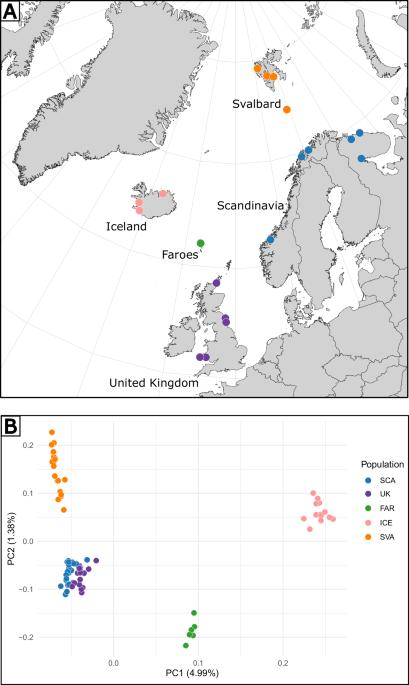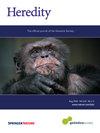Genome sequence analysis provides evidence that a boreal crustacean colonised Svalbard well before the ongoing Atlantification of the Arctic
IF 3.9
2区 生物学
Q2 ECOLOGY
引用次数: 0
Abstract
The study of present-day species distributions often raises questions about historical demography. A particularly interesting phenomenon to put in historical context is contemporary human-induced atlantification and its role in reshaping Arctic ecosystems. Despite this, the colonisation history of the Arctic remains generally understudied. In this study, we investigated the demographic history of the northern acorn barnacle, Semibalanus balanoides, a typically boreal species on the Svalbard Archipelago. Our focus was to determine the source and timing of its colonisation of this Arctic archipelago. Using low-coverage whole-genome sequence data, we evaluated two competing hypotheses: whether S. balanoides populations colonised Svalbard through ancient natural processes before the Anthropocene, or if their appearance is more recent, either natural or a consequence of growing anthropogenic influences, such as increased connectivity and global warming. Our results suggest that this boreal species expanded into the Arctic during the later phase of the Holocene Thermal Optimum, well before human-induced climate change.

基因组序列分析提供了证据,证明在北极大西洋化之前,一种北方甲壳类动物就已经在斯瓦尔巴群岛定居了。
对当今物种分布的研究经常会提出关于历史人口统计学的问题。在历史背景下,一个特别有趣的现象是当代人类引起的大西洋化及其在重塑北极生态系统中的作用。尽管如此,北极的殖民历史仍然没有得到充分的研究。本研究调查了斯瓦尔巴群岛北部典型物种——北方橡实藤壶(Semibalanus balanoides)的种群历史。我们的重点是确定它在这个北极群岛殖民的来源和时间。利用低覆盖率的全基因组序列数据,我们评估了两种相互竞争的假设:是否在人类世之前,balanoides种群通过古老的自然过程殖民了斯瓦尔巴群岛,或者它们的出现是更近的,要么是自然的,要么是日益增长的人为影响的结果,例如连性增加和全球变暖。我们的研究结果表明,这种北方物种在全新世热最佳期后期扩展到北极,远远早于人类引起的气候变化。
本文章由计算机程序翻译,如有差异,请以英文原文为准。
求助全文
约1分钟内获得全文
求助全文
来源期刊

Heredity
生物-进化生物学
CiteScore
7.50
自引率
2.60%
发文量
84
审稿时长
4-8 weeks
期刊介绍:
Heredity is the official journal of the Genetics Society. It covers a broad range of topics within the field of genetics and therefore papers must address conceptual or applied issues of interest to the journal''s wide readership
 求助内容:
求助内容: 应助结果提醒方式:
应助结果提醒方式:


